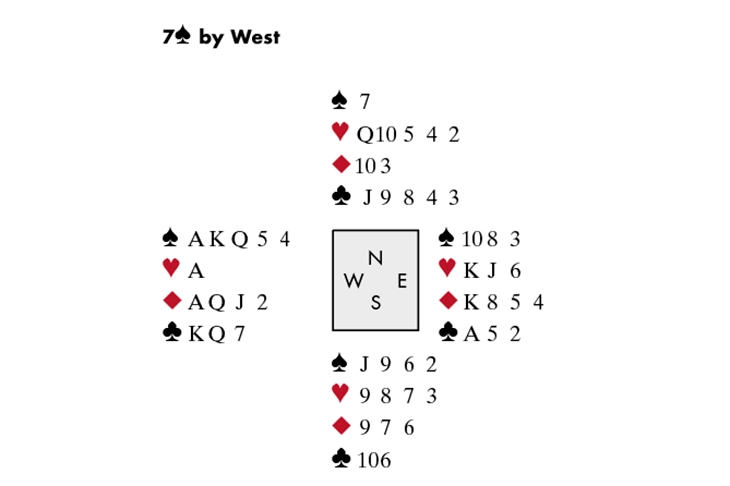Each November, Paula Leslie organises the Young Chelsea Women’s Teams — a fantastic event, attracting many of Europe’s best players to London. It was a shame it had to be held online this year — but I must say there was something rather magical about competing on ‘Realbridge’ with video streaming and sound. How extraordinary to be playing against women from a range of countries — Poland, Norway, Sweden, Serbia, Denmark, France — and to see them in their own homes, sipping coffee, puffing on cigarettes, even slurping noisily from a bowl of soup (as a nice woman from Wales did). Eight months ago the idea would have seemed outlandish.
As usual, I was playing from London. Sitting opposite me — in Ljubljana — was my partner, Barbara Drinovek, whom I met last year through Marusa Gold; we teamed up with Marusa (also in Ljubljana) and Diana Nettleton (Oxford). It was an exhilarating weekend, with plenty of memorable hands. Here, Diana needed her wits about her to beat a grand slam (see diagram).
The opponents reached 7♠ after a lengthy artificial auction. They never discovered they also had a diamond fit, and 7◆ was the superior contract. North led the 7♠. The received wisdom is that you should always lead a trump against a grand slam because it’s safe. Many experts agree. But there are those who warn against it. This is exactly the sort of deal they have in mind. Diana (South) covered dummy’s ♠10 with her ♠J. Declarer won, crossed to dummy’s ♣A and played the ♠8. Had Diana covered, declarer would have made slam easily. Had she hesitated before playing low, declarer would still succeed by running the ♠8, then finessing. But when Diana ducked without a flicker, declarer played the ♠K — and Diana’s ♠9 was the setting trick.






Comments